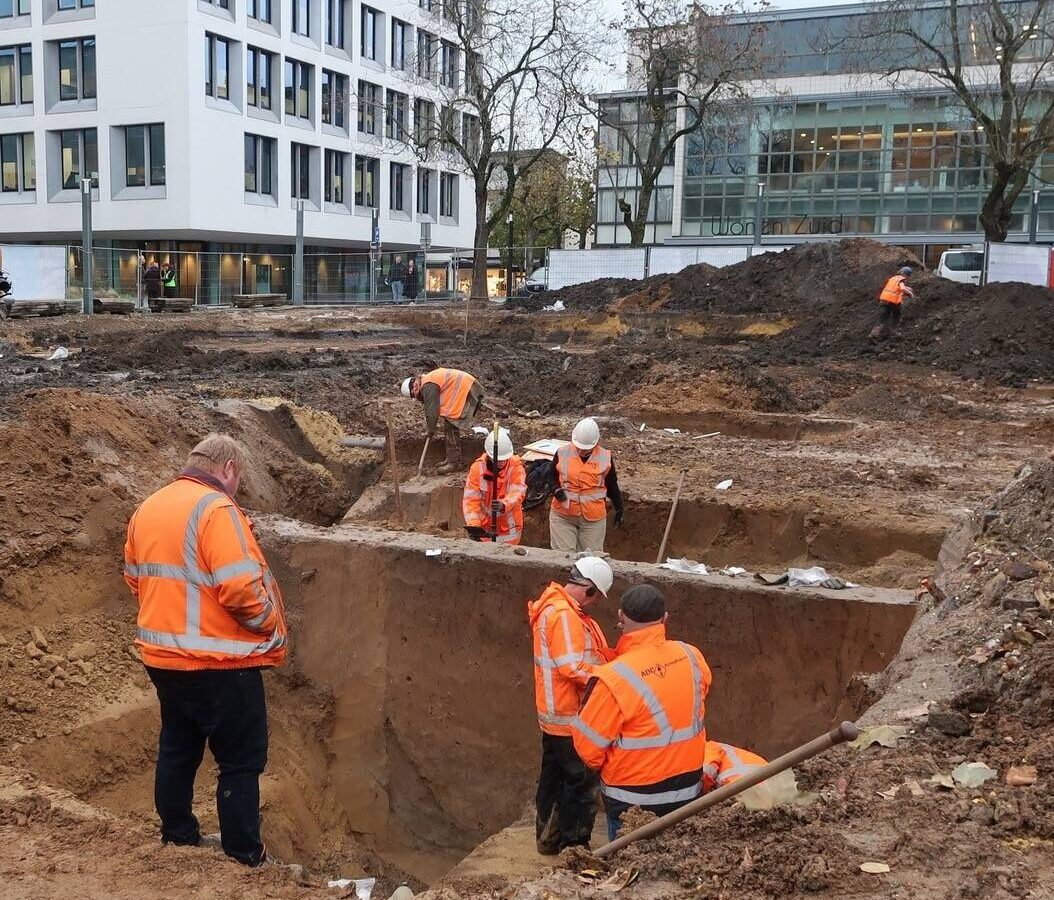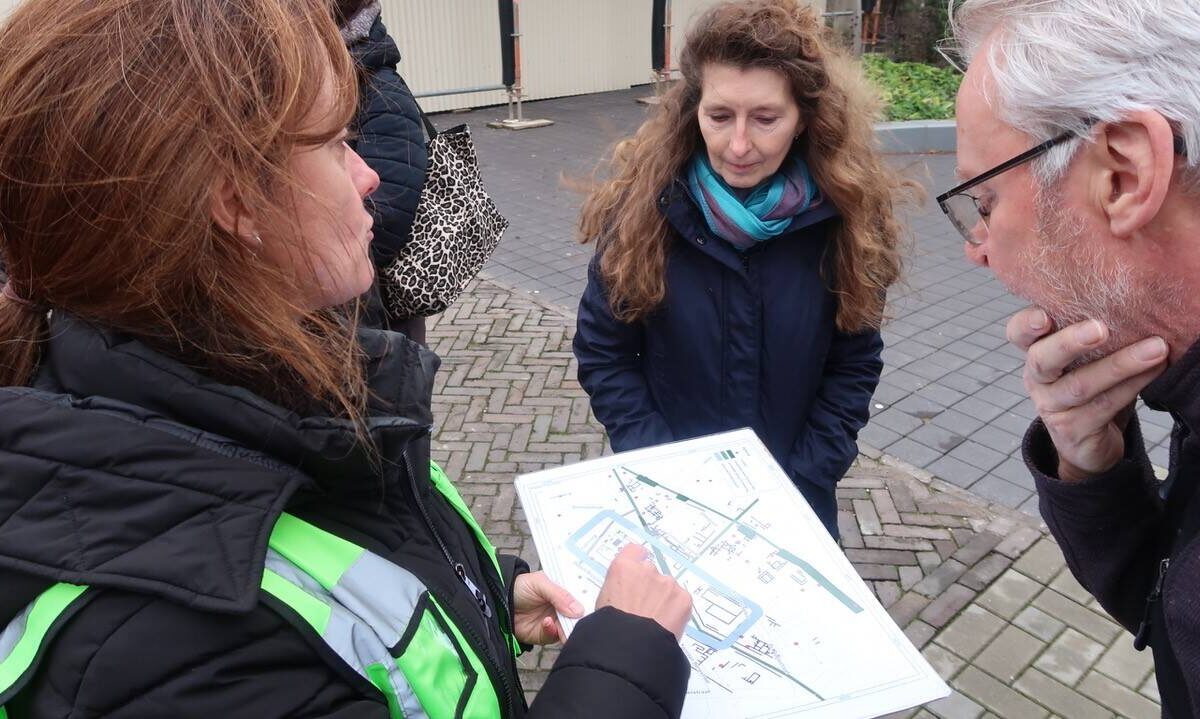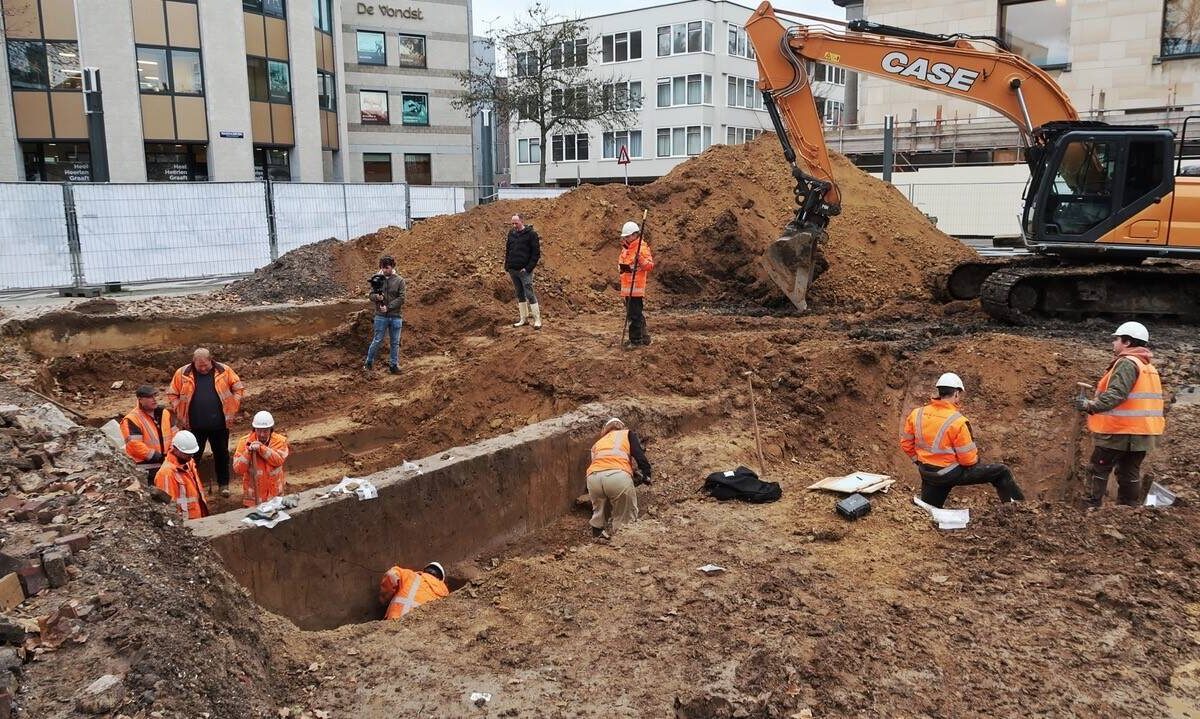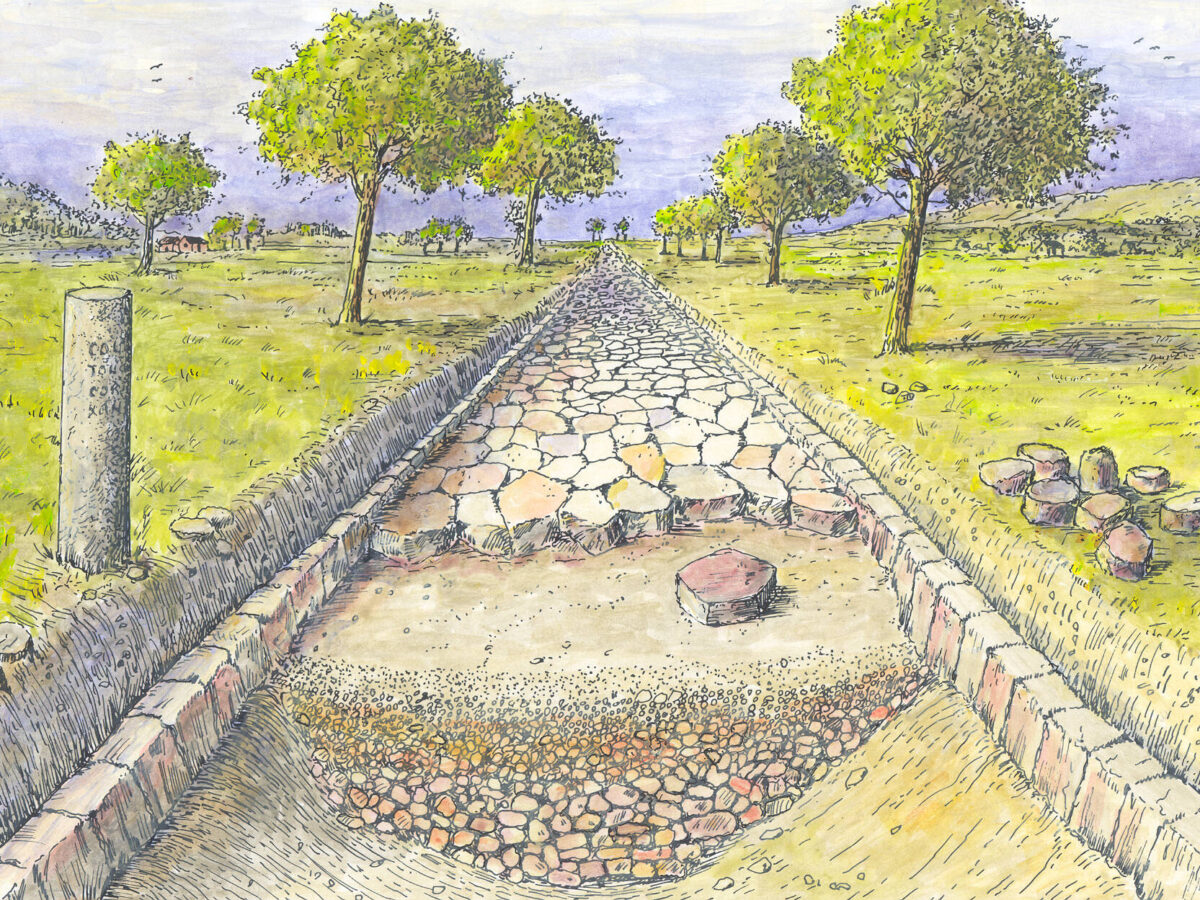Coriovallum Lies Here, Just 60 Centimetres Beneath Heerlen
Author: Harry Lindelauf
Photography: Harry Lindelauf

Rain, snow, storm — the weather gods are doing their best to interfere. Yet the archaeologists at Heerlen’s Raadhuisplein are having the time of their lives. The opportunity to carry out such a large-scale excavation in the middle of a Roman settlement is truly unique. And now it turns out that the remains of Coriovallum lie only 60 to 80 centimetres below modern Heerlen.
From 18 November to 6 December 2024, a team of archaeologists from ADC ArcheoProjecten, together with volunteers and interns, is excavating the Roman past beneath the Raadhuisplein. The research precedes the renewal of the square, scheduled for mid-2025.
Photo: in the southeast corner of the Raadhuisplein, a grave is being uncovered.


A temple, perhaps?
By late November, the results are already tangible. As expected (based on earlier excavations), the foundations of a larger building have been found. Because this spot was also the centre of Coriovallum in Roman times, it must have been a public building from the second or third century. Some have suggested it could be a temple, but regional archaeologist Hilde Vanneste, who leads the excavation, remains cautious. “It’s possible,” she says, “but there’s no scientific evidence to support that claim yet.”
Other finds so far include remains of wooden houses from the first century, a Roman jug made of local white clay, a small Roman metal ear-cleaning spoon, and a metal cloak pin. From later periods come traces of a medieval pottery kiln and the remains of a moat, probably part of the medieval Landsfort Heerlen.
Photo: Roderick Geerts from ADC ArcheoProjecten shows the Roman jug made of local white clay.


A grave as a surprise
Particular attention is given to the southeast corner of the Raadhuisplein. To everyone’s surprise, an early Roman grave was discovered there. Because of this find, the excavation in that part of the square has been extended to greater depth.
Photo: a fragile Roman metal ear-cleaning spoon found using a metal detector.
The Roman finds will be cleaned and conserved in the coming months and then become part of the Provincial Archaeological Depot. The redevelopment of the Raadhuisplein will begin in mid-2025 and is expected to be completed by the end of that year. The new design, which includes more greenery, water, and public activity, will also tell the story of Roman Heerlen.
Photo: not a construction pit, but a large-scale archaeological excavation.


